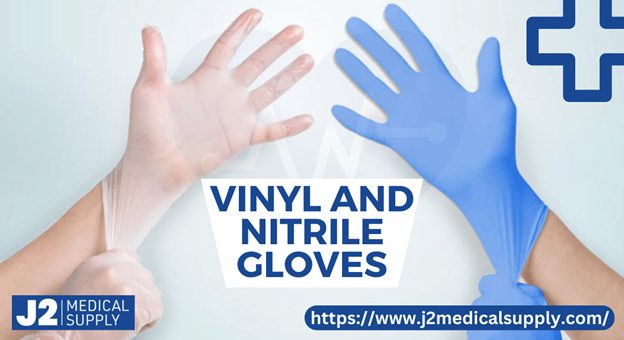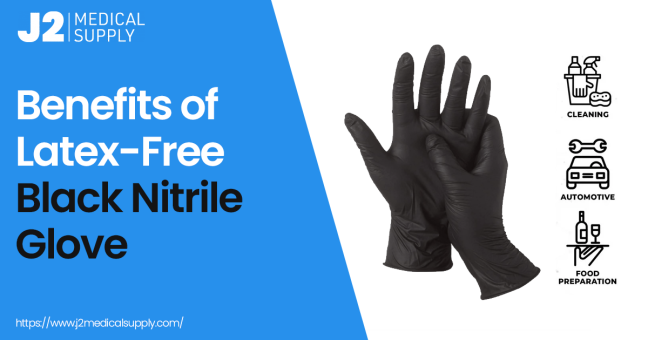In the healthcare industry, the selection of gloves plays a vital role in ensuring the safety of healthcare providers and patients. Healthcare professionals often encounter two popular options: vinyl gloves and nitrile gloves. Understanding the differences between these two types of gloves is essential in deciding which option best suits specific needs and requirements.
Vinyl gloves are made from synthetic materials, specifically polyvinyl chloride (PVC). They are a cost-effective choice and are widely used in various healthcare settings. On the other hand, nitrile gloves are composed of a synthetic rubber known as nitrile butadiene. These gloves are known for their exceptional strength, durability, and resistance to punctures and chemicals. With the ongoing need for reliable personal protective equipment (PPE), especially during the COVID-19 pandemic, it is crucial to understand the distinctions between these glove types to ensure optimal protection.
Vinyl and Nitrile Gloves
This comprehensive guide will delve into the key differences between vinyl and nitrile gloves, exploring their composition, performance characteristics, applications, and benefits. By examining each glove type’s unique properties and advantages, healthcare professionals can make informed decisions when selecting the most suitable option for their specific tasks and requirements.
Furthermore, we will highlight the importance of partnering with a reputable and trusted medical supply company, such as J2 Medical Supply. With their commitment to providing high-quality medical equipment and supplies, including a wide range of gloves, J2 Medical Supply ensures that healthcare providers can access reliable and safe options that meet the industry’s highest standards.
So, let us dive into vinyl and nitrile gloves, understand their unique features, and explore how they contribute to the safety and well-being of healthcare providers and patients alike.
Composition and Material Differences | Vinyl and Nitrile Gloves
Understanding the composition and material differences between vinyl and nitrile gloves is essential in determining their suitability for various healthcare applications. Vinyl gloves are made from polyvinyl chloride (PVC), a synthetic material that offers flexibility and a comfortable fit. On the other hand, nitrile gloves are composed of a synthetic rubber called nitrile butadiene, which provides exceptional durability, strength, and resistance to punctures and chemicals. By examining the unique composition of each glove type, healthcare professionals can make informed decisions based on their specific needs and the tasks at hand.
Performance Characteristics and Protection
Regarding performance characteristics and protection, nitrile gloves excel in several key areas. They offer superior puncture resistance, making them ideal for tasks that require handling sharp objects or potential exposure to bodily fluids. Nitrile gloves also provide excellent chemical resistance, protecting against a wide range of hazardous substances. In contrast, vinyl gloves offer moderate barrier protection and are suitable for low-risk tasks that do not involve significant exposure to chemicals or bodily fluids. Understanding the performance characteristics and level of protection each glove type provides is crucial in ensuring the safety and well-being of healthcare providers and patients.
Applications and Use Cases
Vinyl and nitrile gloves are used in various healthcare settings, but their applications and use cases differ. Vinyl gloves are commonly used in settings requiring frequent glove changes, such as food handling or light-duty tasks in non-sterile environments. They are also suitable for short-duration procedures that involve minimal contact with bodily fluids. On the other hand, nitrile gloves are preferred for high-risk and high-contact situations, such as surgical procedures, emergency care, and tasks involving potential exposure to bloodborne pathogens. Understanding each glove type’s specific applications and use cases helps healthcare professionals select the appropriate gloves for their intended tasks.
Comfort and Fit
Comfort and fit are important considerations when choosing between vinyl and nitrile gloves. Vinyl gloves offer a looser fit and greater flexibility, providing a comfortable option for individuals with latex allergies. They are also latex-free, making them suitable for those with sensitivities. On the other hand, nitrile gloves offer a snugger fit and excellent tactile sensitivity, allowing for precise movements and enhanced agility. This is particularly advantageous in procedures that require fine motor skills and touch sensitivity. Balancing comfort and fit is crucial in ensuring healthcare providers can easily perform their tasks without compromising safety.
Environmental Considerations and Sustainability
Environmental considerations and sustainability play an increasingly important role in glove selection. Vinyl gloves are generally more cost-effective and have a lower environmental impact regarding production and disposal. However, they are not biodegradable and can contribute to plastic waste. Although slightly more expensive, nitrile gloves are considered more environmentally friendly as they can be recycled and are more readily biodegradable. Healthcare professionals and facilities seeking sustainability may opt for nitrile gloves to minimize their environmental footprint. Considering the environmental impact of glove choices aligns with the broader goal of sustainable healthcare practices.
In conclusion, understanding the difference between vinyl and nitrile gloves is crucial for healthcare professionals in making informed decisions regarding their choice of personal protective equipment. J2 Medical Supply, a trusted provider of high-quality medical supplies, recognizes the significance of selecting the appropriate sterile gloves to ensure optimal protection and safety in healthcare settings.
Vinyl gloves offer flexibility, comfort and a cost-effective option for low-risk tasks and non-sterile environments. They are suitable for applications that require frequent glove changes and minimal exposure to chemicals or bodily fluids. On the other hand, nitrile gloves provide superior durability, puncture resistance, and chemical protection, making them the preferred choice for high-risk and high-contact situations.
By partnering with J2 Medical Supply, healthcare professionals can access various vinyl and nitrile materials that meet stringent quality standards. J2 Medical Supply is committed to delivering reliable, high-quality products that prioritize healthcare providers’ and patients’ safety and well-being.
When selecting between vinyl and nitrile gloves, it is important to consider factors such as performance characteristics, applications, comfort, and environmental considerations. J2 Medical Supply offers a comprehensive range of sterile gloves to meet the diverse needs of healthcare professionals, ensuring they have the right gloves to effectively perform their duties while maintaining the highest safety standards.
Choose J2 Medical Supply for your glove needs and experience the assurance of top-tier products backed by a commitment to excellence and customer satisfaction.




